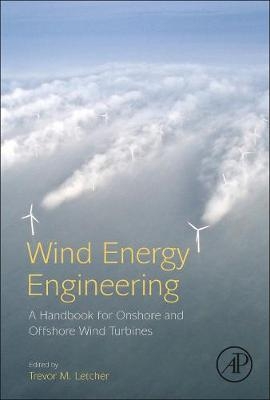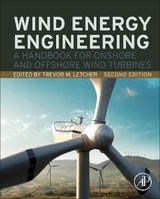
Wind Energy Engineering
Academic Press Inc (Verlag)
978-0-12-809451-8 (ISBN)
- Titel erscheint in neuer Auflage
- Artikel merken
Each chapter includes a research overview with a detailed analysis and new case studies looking at how recent research developments can be applied. Written by some of the most forward-thinking professionals in the field and giving a complete examination of one of the most promising and efficient sources of renewable energy, this book is an invaluable reference into this cross-disciplinary field for engineers.
Professor Trevor Letcher is an Emeritus Professor at the University of KwaZulu-Natal, South Africa, and living in the United Kingdom. He was previously Professor of Chemistry, and Head of Department, at the University of the Witwatersrand, Rhodes University, and Natal, in South Africa (1969-2004). He has published over 300 papers on areas such as chemical thermodynamic and waste from landfill in peer reviewed journals, and 100 papers in popular science and education journals. Prof. Letcher has edited and/or written 32 major books, of which 22 were published by Elsevier, on topics ranging from future energy, climate change, storing energy, waste, tyre waste and recycling, wind energy, solar energy, managing global warming, plastic waste, renewable energy, and environmental disasters. He has been awarded gold medals by the South African Institute of Chemistry and the South African Association for the Advancement of Science, and the Journal of Chemical Thermodynamics honoured him with a Festschrift in 2018. He is a life member of both the Royal Society of Chemistry (London) and the South African Institute of Chemistry. He is on the editorial board of the Journal of Chemical Thermodynamics, and is a Director of the Board of the International Association of Chemical Thermodynamics since 2002.
A. INTRODUCTION
B. WIND RESOURCE How is wind generated? Wind speeds, wind force, wind power Theory of wind energy Wind power density Theoretical power captured by a wind turbine Wind distribution world-wide
C. WIND TURBINE TECHNOLOGY History of harnessing wind power Design of horizontal axis wind turbines (power control, stall, generator torque, Yawing, electrical and mechanical braking, turbine size, generator type, blade design, material and count, tower height) Design of vertical axis wind turbines (including Savonius type, designs, advantages) Aerodynamics (drag, lift, maximum power, axial momentum, angular momentum, wake rotation, blade element and momentum theory) Turbine blade size and maximum power output Wind Turbine components (blades, gearbox, rotor shaft, brake, magnets, etc) Variable speed drives Speed Power generation, synchronous and asynchronous generators Operation and Maintenance Wind energy measurements
D. GENERATION OF ELECTRICITY Wind farms Integration into National Grids Small scale wind turbines Storing energy from wind turbines
E. PLANNING and EXECUTION OF WIND PROJECTS Development Politics and public opinion Prospecting Financing Time frame Commissioning Installation
F. WIND ENERGY WORLD WIDE Comparison of on-shore and off-shore Countries investing in on-shore wind power Countries developing and producing wind turbines
G. ENVIRONMENTAL IMPACTS OF WIND ENERGY Life cycle of energy input and output Impact on wild life, impact on livestock Impact on humans, noise, landscape and aesthetics, community benefits and incentives, safety Land use Rare earth use (magnets)
H. FINANCIAL MODELING/WIND ENERGY ECONOMICS Net energy gain Energy return on investment (EROI) Incentives Revenue
I. REGULATIONS
J. GROWTH TRENDS AND THE FUTURE OF WIND ENERGY
| Erscheinungsdatum | 28.05.2017 |
|---|---|
| Verlagsort | San Diego |
| Sprache | englisch |
| Maße | 152 x 229 mm |
| Gewicht | 1180 g |
| Themenwelt | Technik ► Elektrotechnik / Energietechnik |
| ISBN-10 | 0-12-809451-6 / 0128094516 |
| ISBN-13 | 978-0-12-809451-8 / 9780128094518 |
| Zustand | Neuware |
| Haben Sie eine Frage zum Produkt? |
aus dem Bereich



